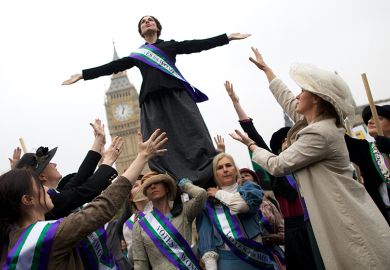At a time of limited library funding, escalating student numbers and ever more rapidly moving areas of intellectual endeavour, thoughtfully compiled and crafted readers such as this are invaluable. Readers fall into two broad categories: those that seek to provide a worthy selection of the literature that demarcates the field; and those that attempt to combine established authors with the less well known and the unexpected and so to set the scene for a series of creative, thought-provoking symbioses. This volume is clearly a significant contribution to the latter category. It will be of immense benefit to students and academics alike in deconstructing masculinities throughout the humanities and social sciences.
The literature on masculinity is both theoretically and methodologically diverse and therefore especially difficult to anthologise. However, this reader admirably succeeds in representing the growing body of scholarship devoted to the study of masculinities and their formations. It also reflects the fact that there is, as yet, no consensus about masculinity studies' object of inquiry. A wide range of interdisciplinary papers since the late 1980s are judiciously brought together with older papers and others, which do not frame themselves explicitly in these terms but are now to be "re-read" from the perspective of masculinities (for example, Clifford Geertz on the Balinese cockfight). While more recent contributions are set alongside classic statements, the reader also attempts to bridge the social sciences and the humanities: whereas the former typically pays attention to masculine rituals, organisation and roles within different cultures, the latter facilitates our understanding of cultural formations and representations of gender.
This weighty reader (it is more than 400 pages in length) clearly demonstrates that masculinities are historically constructed, mutable and contingent, and analyses their recent manifestations. The five sections into which it is divided are helpful guides rather than exclusive categories and, as the editors point out, "reading them out of order or combining them under a different organisational rubric could yield equally productive results". Quite so. The first section ("Eroticism") focuses on desires and practices formed through the subject's interaction with society. Sigmund Freud is joined by Kaja Silverman, Roger Lancaster and David Halperin. The second section ("Social sciences") traces the far-from-obvious origins of masculinities in economic and social structures. The workings of patriarchy are interrogated (along with how patriarchal relations are rendered "natural") by recourse to the work of Geertz, Tim Carrigan, Bob Connell, John Lee, Carole Pateman and Michael Kimmel.
The third section on "Representations" (Eve Kosofsky Sedgwick, King-Kok Cheung, Kobena Mercer and Robyn Wiegman) demonstrates how notions of "the masculine" are created and powerfully conveyed through representations, which in turn sustain often rapidly changing cultural ideas about gender. Representations reveal masculinity not as unitary, but as highly diverse and plural. A range of representations in a variety of media are examined, along with a series of interpretive strategies. Meaning, it is made clear, results from the interaction between the reader/spectator and the "text".
The papers in "Empire and modernity", the fourth section, link masculinities with the rise and fall of European imperialism. The six chosen authors (Frantz Fanon, Connell, Richard Dyer, Daniel Boyarin, Revathi Krishnaswamy and Juli Peteet) demonstrate how gender was harnessed to colonial power and how native masculinities were displaced during occupation, but then often revived by anti-imperialist resistance movements to subvert the occupiers.
The writers included in the fifth and final section ("Borders") take the view that masculinity is best understood not through examining its idealised, dominant forms but by looking at "masculinities-on-the-border". They (Alan Bray, Judith Halberstam, Anne Fausto-Sterling and Don Kulick) thereby lay bare the instabilities in the apparently fixed dichotomies between men/women, masculinity/femininity and hetero/homosexuality and, in the process, unsettle many of the assumptions that still govern dominant understandings of masculinity.
This excellent and timely reader is introduced by a succinct but insightful essay by the two American editors, Rachel Adams and David Savran, both of whom have proven track records in the field. It would not be too much to claim that it is good enough to mark the field's coming of age.
John Beynon is reader in cultural studies, school of humanities and social studies, University of Glamorgan. He is the author of Masculinities and Culture , published by the Open University Press.
The Masculinity Studies Reader
Editor - Rachel Adams and David Savran
ISBN - 0 631 22659 1 and 22660 5
Publisher - Blackwell
Price - £60.00 and £16.99
Pages - 418
Register to continue
Why register?
- Registration is free and only takes a moment
- Once registered, you can read 3 articles a month
- Sign up for our newsletter
Subscribe
Or subscribe for unlimited access to:
- Unlimited access to news, views, insights & reviews
- Digital editions
- Digital access to THE’s university and college rankings analysis
Already registered or a current subscriber?



